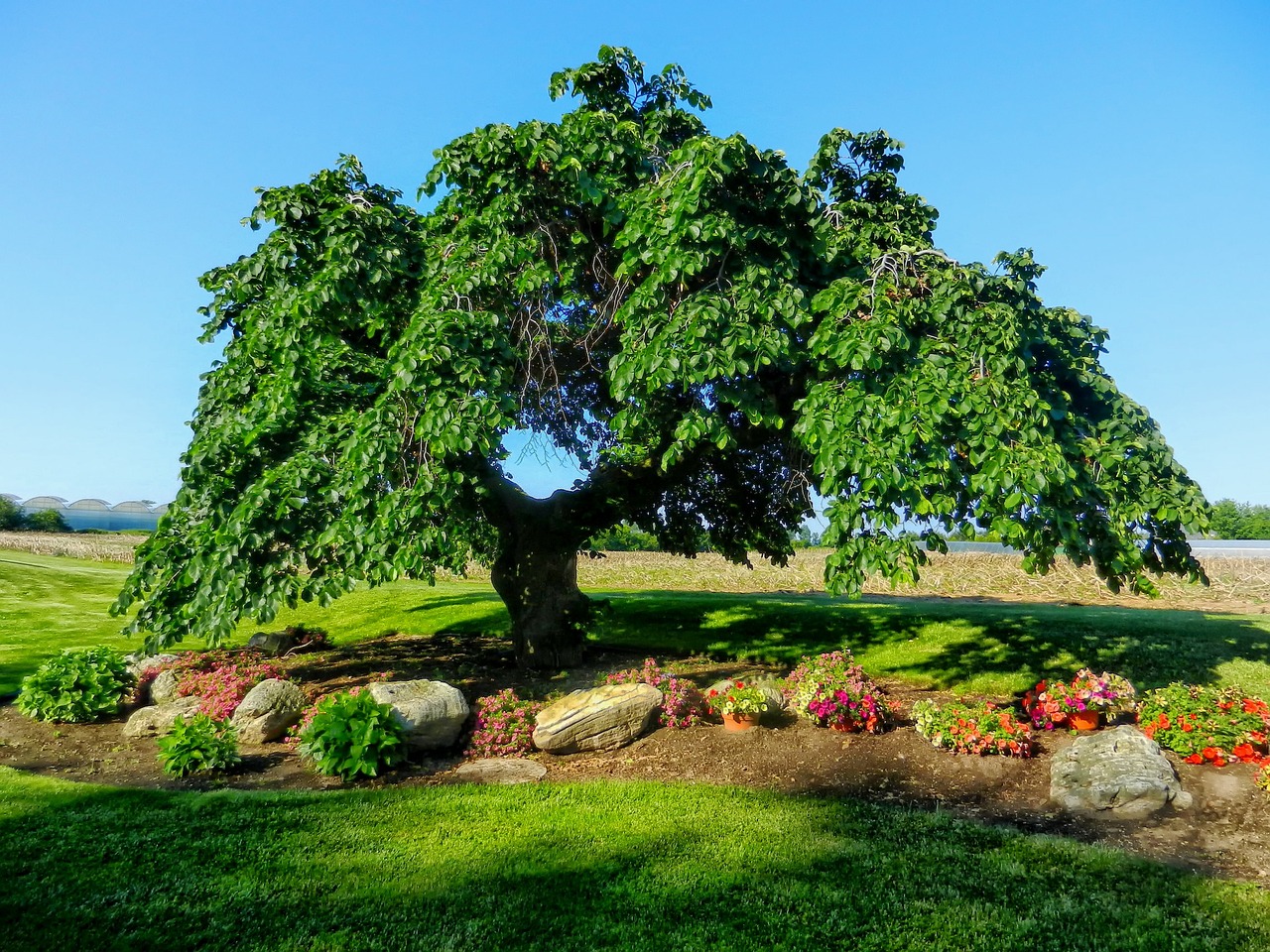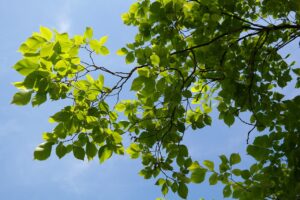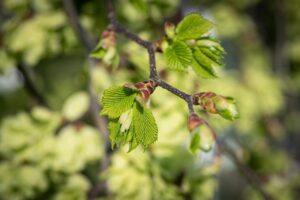Elm
Overview
Elm trees of the Ulmus genus, including the admired American Elm, grace landscapes with their stately presence and adaptability to diverse conditions1 2. These trees, recognized for their asymmetric, toothed leaves and tolerance of environmental stressors, once lined 19th-century city streets and continue to offer ornamental value1 3. Despite challenges like Dutch Elm disease, careful cultivation can maintain their splendor4.

Characteristics
Known for its durability, arching canopy, and tolerance to diverse urban conditions.
Region
Elm trees are commonly found and grown in temperate regions of the Northern Hemisphere.
Natural Habitat
Elm trees are commonly found in forests, along rivers, in riparian zones, and in open fields.
Cultivation
Prefers full sun; adaptable to a range of soil conditions including various pH levels, moisture content; moderate to high water requirement.
Uses and Benefits
The Elm tree is not just a pretty face in the garden—it’s a multifaceted wonder that offers a range of uses and benefits. Here are some ways you can make the most of this versatile tree:
- Shade and shelter: Elm trees provide excellent shade on hot summer days, making them perfect for picnics or simply relaxing outdoors. Their dense canopy also offers shelter to various wildlife species.
- Windbreaks: Elms can be planted as windbreaks to protect more delicate plants in your garden from strong winds and harsh weather conditions.
- Soil stabilization: The extensive root system of Elm trees helps prevent soil erosion, making them a great choice for landscaping on slopes or near water bodies.
- Medicinal uses: Elm bark has been used in traditional medicine to treat various ailments, such as skin irritations, wounds, and urinary tract infections1.
- Crafting material: The strong, durable wood of Elm trees is suitable for making furniture, flooring, and other wooden crafts.
In addition to these practical uses, Elm trees are known for their adaptability and resilience. They can thrive in various environments and withstand challenging weather conditions, making them a low-maintenance addition to your garden or landscape4.
Whether you’re looking for a majestic shade tree, a windbreak for your garden, or a source of natural remedies, the Elm tree is an excellent choice that combines beauty and functionality.

Cultivation Tips
When cultivating Elm trees, prioritizing disease prevention is crucial, particularly in regards to the formidable Dutch Elm disease. Selecting disease-resistant Elm cultivars is a proactive strategy to minimize this risk1. These impressive trees thrive in full sun exposure and adapt to a wide range of soil conditions, from acidic to alkaline, and can tolerate varying moisture levels45.
To ensure a robust start for your Elm trees, choose a planting site with ample space to accommodate their expansive growth potential. These trees can reach awe-inspiring heights of up to 100 feet, with canopies spreading equally wide3. Implement a regular watering and mulching regimen to promote vigorous growth and establish a magnificent natural canopy that will be cherished for generations.
Key cultivation tips for Elm trees include:
- Select disease-resistant cultivars to reduce the risk of Dutch Elm disease
- Plant in full sun exposure for optimal growth
- Adapt to various soil types, from acidic to alkaline
- Tolerate a range of moisture levels
- Provide ample space for mature trees to reach up to 100 feet in height and spread
- Maintain a consistent watering and mulching routine to encourage healthy growth
Seasonal Considerations
When cultivating Elm trees, it’s crucial to prioritize disease prevention, particularly against the infamous Dutch Elm disease. Choose disease-resistant Elm cultivars to minimize this risk1. These majestic trees thrive in full sunlight and are adaptable to various soil conditions, from acidic to alkaline, and can tolerate different moisture levels4 5.
To give your Elm trees the best start, select a spacious planting site that allows them to reach their full potential, which can be up to 100 feet in height with an equally impressive spread3. Follow these tips for optimal growth:
- Water your Elm trees regularly, especially during dry spells, to maintain consistent soil moisture.
- Apply a layer of organic mulch around the base of the tree to retain moisture, regulate soil temperature, and suppress weed growth.
- Prune your Elm trees during their dormant season to remove dead, damaged, or diseased branches and maintain a healthy structure.
- Monitor your trees for signs of Dutch Elm disease, such as wilting leaves or branch dieback, and take appropriate action if needed.
By providing your Elm trees with the proper care and attention, you’ll be rewarded with a magnificent natural canopy that will be enjoyed for generations to come. These stunning trees not only add beauty to your landscape but also provide valuable benefits such as shade, wildlife habitat, and improved air quality.

Issues and Troubleshooting
While elm trees are a stunning addition to any landscape, gardeners must remain vigilant to protect them from potential issues. Dutch Elm disease, a devastating fungal affliction spread by bark beetles, has historically decimated elm populations1. To combat this, it’s crucial to select cultivars with proven disease resistance and monitor your trees closely for signs of stress or infection.
Another common pest that threatens elm trees is the Elm leaf beetle. These insects chew through the leaves, potentially weakening the tree and making it more susceptible to other issues4. To protect your elms from these beetles, consider the following steps:
- Regularly inspect your trees for signs of beetle activity, such as skeletonized leaves or the presence of larvae
- Remove and destroy any affected leaves to disrupt the beetle’s life cycle
- Apply an appropriate insecticide, following the manufacturer’s instructions and local regulations, to control severe infestations
By staying proactive and addressing issues promptly, you can help maintain the health and longevity of your elm trees. Regular monitoring for signs of stress, disease, or pest activity is essential. If you notice any concerns, take action swiftly to prevent minor problems from escalating into more severe issues.
With proper care and attention, elm trees can thrive in your landscape for many years, providing shade, beauty, and ecological benefits. By being an informed and engaged gardener, you can play a vital role in preserving these majestic trees for generations to come.
History and Folklore
Elm trees, with their grand stature, are woven into the very fabric of lore and history. In various mythologies, they’ve been revered as symbols of strength, dignity, and forbearance. These majestic trees held a special place in the heart of pastoral folk tales, often serving as communal gathering points or marking significant landscapes.
Historically, elms have lined the streets of burgeoning cities since the 19th century, their shade offering a natural respite in urban expanses5. The American Elm, in particular, was highly valued before the onslaught of Dutch Elm disease, which emphasized the tree’s importance in culture and the collective memory of many communities.
Some interesting facts about the historical significance of elm trees include:
- In Celtic mythology, the elm was associated with the underworld and believed to be the abode of fairies and spirits.
- The ancient Romans and Greeks regarded the elm as a symbol of death and grief, often planting them near cemeteries.
- In Medieval Europe, elms were often used as landmarks for meeting places, markets, and courts of law.
- Native Americans utilized elm bark for various medicinal purposes, such as treating fever, wounds, and skin irritations.
Through history, the elm stands tall, a silent witness to the passage of time and the tales of yore. Its enduring presence in our landscapes and cultural narratives is a testament to the tree’s resilience and the deep-rooted connection it shares with human civilization.
References
1. Ultimate Guide To Grow And Care For Elm Trees | Plantly, https://plantly.io/plant-care/how-to-grow-and-care-for-elm-trees/
2. How to Grow and Care for Elm Trees | Gardener’s Path, https://gardenerspath.com/plants/landscape-trees/grow-elm/
3. Growing American Elms: American Elm Care Guide – Gardening Know How, https://www.gardeningknowhow.com/ornamental/trees/elm/american-elm.htm
4. Elm cultivars | The Morton Arboretum, https://mortonarb.org/plant-and-protect/trees-and-plants/elm-cultivars/
5. American elm | The Morton Arboretum, https://mortonarb.org/plant-and-protect/trees-and-plants/american-elm/
Nicolas Duval
Nicolas is a passionate advocate for nature and the art of wildcrafting. His dedication shines through in Wildcraftia, a website he meticulously crafted to serve as a haven for nature enthusiasts worldwide. Driven by a deep appreciation for nature’s connection to humanity, Nicolas embarked on his journey in 2011 with SmokableHerbs, a platform showcasing his love for nature’s bounty. Building upon this foundation, he established Smokably, a thriving online store offering premium herbs and blends to a global audience.
